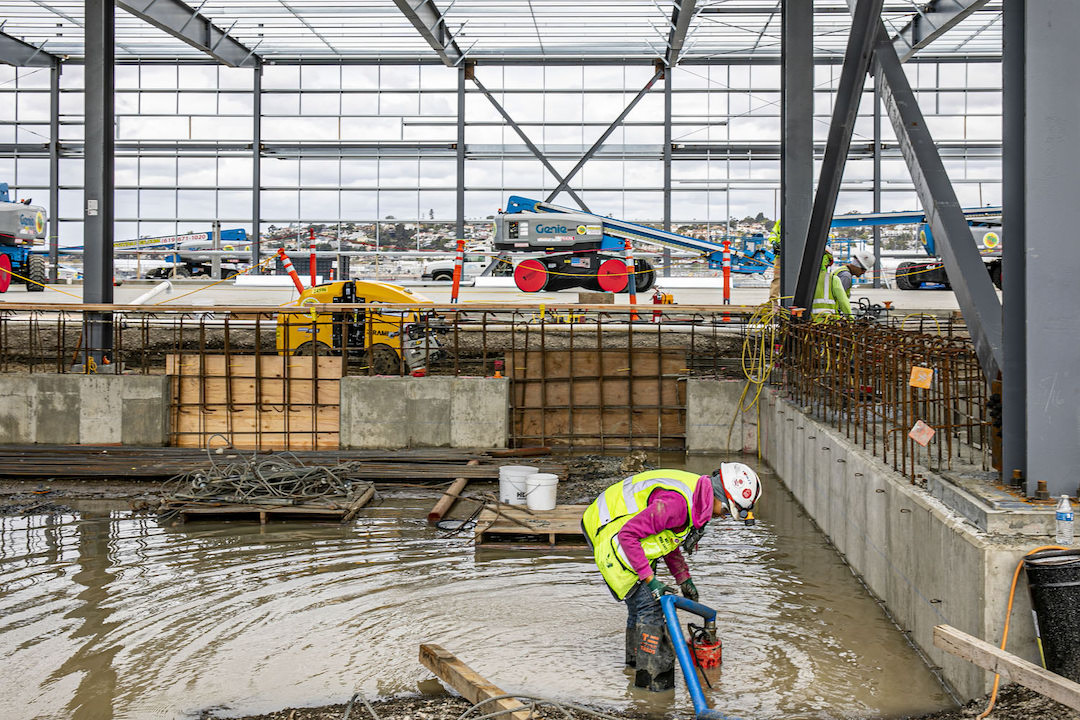Nearly two out of three U.S. metro areas added construction jobs between October 2020 and October 2021, according to an analysis by the Associated General Contractors of America of government employment data released today. Association officials noted that the job gains would likely have been larger and more widespread if firms weren’t dealing with the twin challenges of supply chain problems and labor shortages.
“While it is heartening that construction is recovering from the lows of 2020 in much of the country, the pandemic is still causing major supply-chain problems and is keeping some workers from seeking employment,” said Ken Simonson, the association’s chief economist. “Those impediments threaten to limit construction employment gains in many metros.”
Construction employment increased in 236 or 66% of 358 metro areas over the last 12 months. Sacramento--Roseville--Arden-
Construction employment declined from a year earlier in 72 metros and held steady in 50. Nassau County-Suffolk County, N.Y. lost the most jobs (-6,700 or -8%), followed by New York City (-5,500 jobs, -3%); Orange-Rockland-Westchester counties, N.Y. (-3,600 jobs, -8%); Dallas-Plano-Irving, Texas (-2,800 jobs, -2%) and Calvert-Charles-Prince George’s counties, Md. (-2,600 jobs, -8%). The largest percentage declines were in Evansville, Ind.-Ky. (-17%, -1,700 jobs); Altoona, Pa. (-13%, -400 jobs); Watertown-Fort Drum, N.Y. (-11%, -200 jobs); and Gary, Ind. (-10%, -1,700 jobs).
Association officials urged the Biden administration to continue working to reduce tariffs on key construction materials, and to take additional steps to ease supply chain problems at ports and other shipping facilities. They added that the association was working to recruit more people into the construction industry, and the recently enacted Bipartisan Infrastructure Bill should send a positive message to many workers about the expanding career opportunities in construction.
“Firms are struggling to source materials for projects, coping with rising prices for those materials, all while eagerly searching for workers to put those materials in place,” said Stephen E. Sandherr, the association’s chief executive officer. “We are eager to work with public officials to address supply chain challenges even as we work to recruit more people into high-paying construction careers.”
View the metro employment data, rankings, top 10, and new highs and lows.
Related Stories
Market Data | Mar 14, 2024
Download BD+C's March 2024 Market Intelligence Report
U.S. construction spending on buildings-related work rose 1.4% in January, but project teams continue to face headwinds related to inflation, interest rates, and supply chain issues, according to Building Design+Construction's March 2024 Market Intelligence Report (free PDF download).
Contractors | Mar 12, 2024
The average U.S. contractor has 8.1 months worth of construction work in the pipeline, as of February 2024
Associated Builders and Contractors reported that its Construction Backlog Indicator declined to 8.1 months in February, according to an ABC member survey conducted Feb. 20 to March 5. The reading is down 1.1 months from February 2023.
Market Data | Mar 6, 2024
Nonresidential construction spending slips 0.4% in January
National nonresidential construction spending decreased 0.4% in January, according to an Associated Builders and Contractors analysis of data published today by the U.S. Census Bureau. On a seasonally adjusted annualized basis, nonresidential spending totaled $1.190 trillion.
Multifamily Housing | Mar 4, 2024
Single-family rentals continue to grow in BTR communities
Single-family rentals are continuing to grow in built-to-rent communities. Both rent and occupancy growth have been strong in recent months while remaining a financially viable option for renters.
MFPRO+ News | Mar 2, 2024
Job gains boost Yardi Matrix National Rent Forecast for 2024
Multifamily asking rents broke the five-month streak of sequential average declines in January, rising 0.07 percent, shows a new special report from Yardi Matrix.
K-12 Schools | Feb 29, 2024
Average age of U.S. school buildings is just under 50 years
The average age of a main instructional school building in the United States is 49 years, according to a survey by the National Center for Education Statistics (NCES). About 38% of schools were built before 1970. Roughly half of the schools surveyed have undergone a major building renovation or addition.
MFPRO+ Research | Feb 27, 2024
Most competitive rental markets of early 2024
The U.S. rental market in early 2024 is moderately competitive, with apartments taking an average of 41 days to find tenants, according to the latest RentCafe Market Competitivity Report.
Construction Costs | Feb 22, 2024
K-12 school construction costs for 2024
Data from Gordian breaks down the average cost per square foot for four different types of K-12 school buildings (elementary schools, junior high schools, high schools, and vocational schools) across 10 U.S. cities.
Student Housing | Feb 21, 2024
Student housing preleasing continues to grow at record pace
Student housing preleasing continues to be robust even as rent growth has decelerated, according to the latest Yardi Matrix National Student Housing Report.
Architects | Feb 21, 2024
Architecture Billings Index remains in 'declining billings' state in January 2024
Architecture firm billings remained soft entering into 2024, with an AIA/Deltek Architecture Billings Index (ABI) score of 46.2 in January. Any score below 50.0 indicates decreasing business conditions.

















